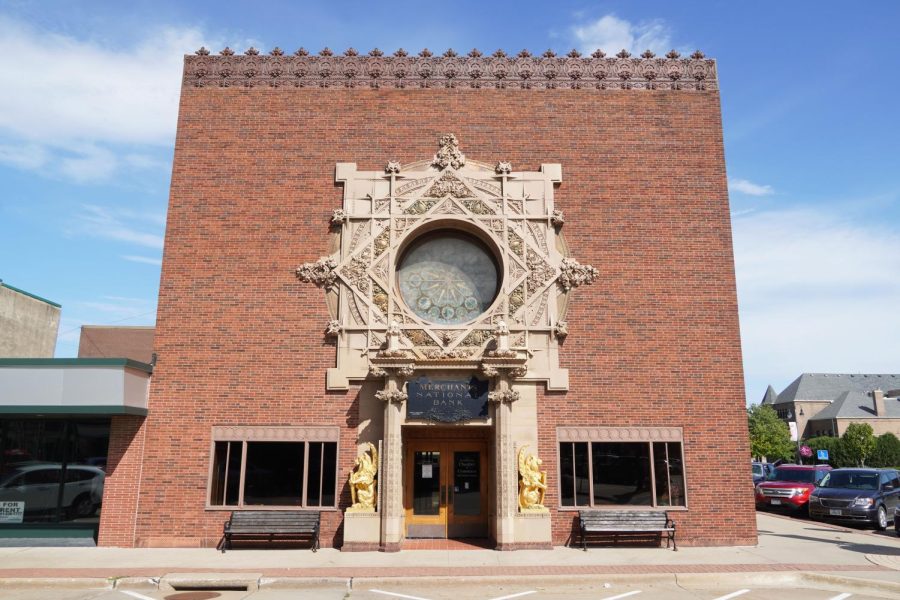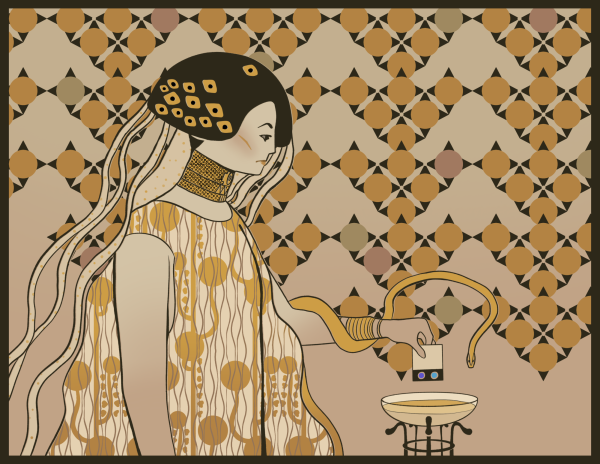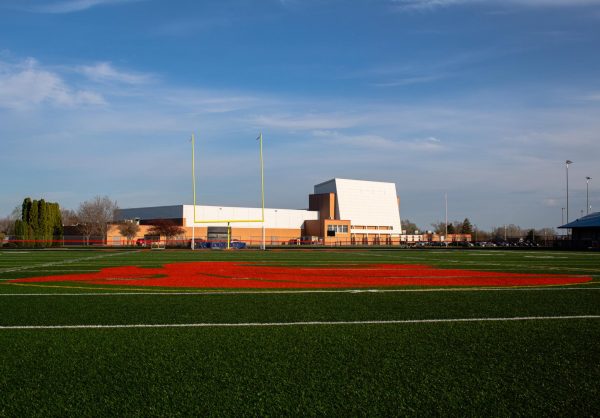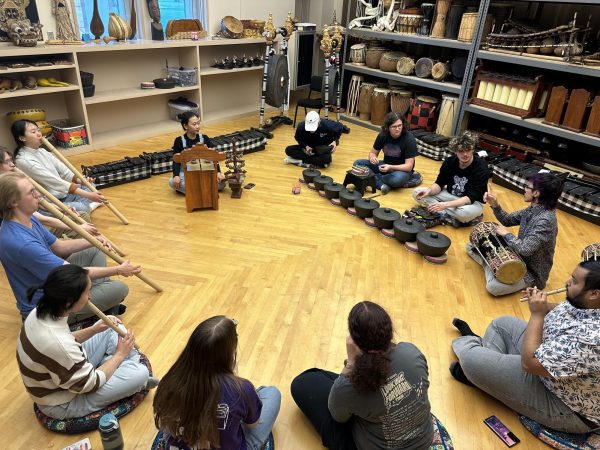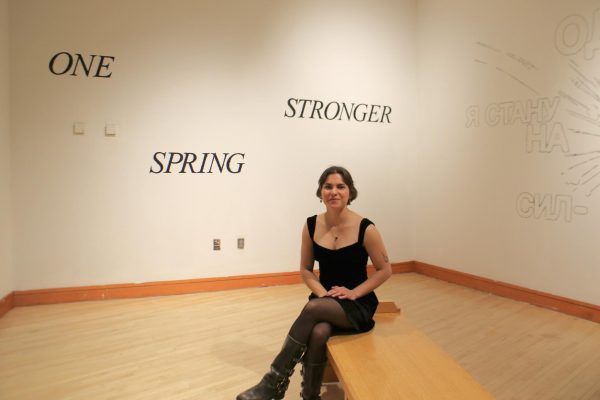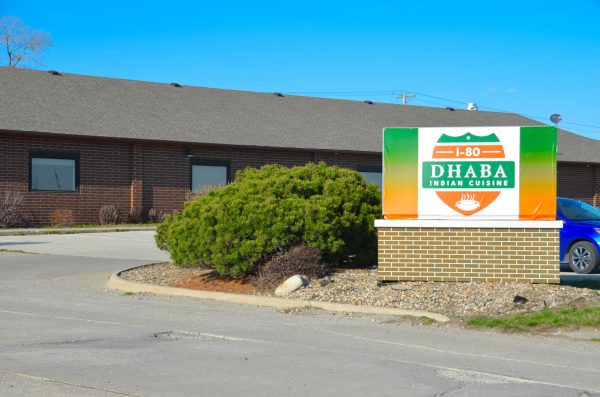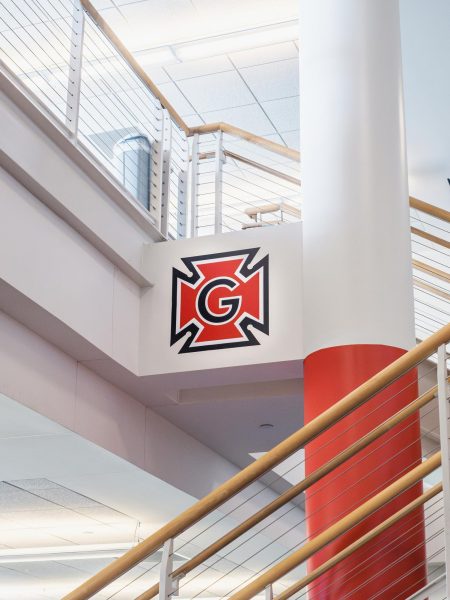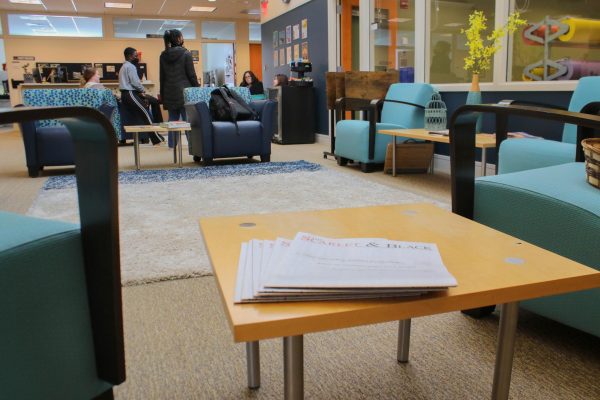Uncovering the jewel box of the prairie
Merchant’s National Bank, sitting on the corner of Broad Street and 4th Avenue, was designed by renowned architect Louis Sullivan in 1914.
September 26, 2022
For a passenger disembarking a train at the Grinnell depot in the early twentieth century, the first sight welcoming them to town would be a majestic new building designed by renowned architect Louis Sullivan.
Merchant’s National Bank, on 833 4th Ave, was constructed in 1914 and opened on New Year’s Day 1915. In a February 1916 edition of The Western Architect, the building is described as “substantial and dignified; representative of the business conducted within its walls,” well in line with Sullivan’s own oft-repeated aphorism and the cornerstone of his architectural philosophy: that “form ever follows function.”
A giant of the Chicago skyline, Sullivan pioneered the development of a uniquely American form of architecture in the late 19th and early 20th centuries. His designs eschewed the neoclassical impulses of the 18th and earlier 19th centuries; in lieu of columns, domes and triangular rooves cast from stone, Sullivan integrated brick, cast iron and terracotta ornamentation into his projects.
Widely denoted as “the father of the skyscraper,” Sullivan designed the Chicago Stock Exchange, the Guaranty Building in Buffalo and the Wainwright Building in St. Louis during his tenure at the famed Adler & Sullivan architectural firm.
The bank is part of a series of designs built in the final years of Sullivan’s career. Despite his earlier successes in Chicago, St. Louis and Buffalo, by the turn of the century, Adler & Sullivan had dissolved in the wake of the financial Panic of 1893, and Sullivan’s unique style had fallen out of favor as a Beaux-arts fever hit the United States.
During the final two decades of his life and career, his commissioned pieces shrunk in size and scope, but they still commanded much of the majesty of his earlier works. Merchant’s National Bank is one of eight banks dotted across small towns in the Midwest, a postlude to an electric career.
The banks are often described as “jewel boxes,” given their straightforward construction complemented by intricate adornments across their facades and interiors rich with light filtered through stained glass panels.
It’s impossible to miss the nine-panel series along the Broad Street wall: a nacred blend of pink, white and yellow glass lays a palette for a series of emerald detail pieces. Gazing upwards, an expansive skylight brings the outside in, as sunlight diffuses through azure panels and evokes a late-afternoon sky.
The Merchant’s National Bank building is flush with the classic elements of a Sullivan piece: intricate ornamentation drawn from nature, especially the Midwestern prairie. Tri-blossom figures bloom across a spiraled roof band, and ochre vines carve a division between the main area and the former deposit room.
At the building’s façade, intricately carved terracotta frames spiral out of the so-called “rose window,” a jewel-toned, kaleidoscopic sunburst above the front door.
Glowing chartreuse pendant lights descend from the ceiling, their slender but solid form running parallel to the unique brick structure that makes up both the building’s façade and exterior walls. Thinner and longer than standard bricks, they were integrated with iron elements whose speckles provide textural and color contrast, said Grinnell Chamber of Commerce Member Experience Coordinator Kendra Vincent.
Two golden griffins buttress the entrance — replicas cast in bronze from terracotta originals. Stepping towards the back of space, one meets the original griffins, statues that met an untimely end after a spate of vandalism in the 2000s. Their broken remains are now ensconced in glass, offering visitors the chance to see their rod and terracotta scaffolding.
Louis Sullivan died in 1924 alone and bankrupt in a Chicago hotel room. Despite the inordinate influence he commanded over American architecture, especially in the Midwest, a large swath of his buildings were demolished in the 20th century. The series of “jewel boxes” stand as his envoi, consumingly striking pieces backlit by a melancholic biography.
Except for a brief gap during the Great Depression, the building has been consistently used by banks or the Chamber of Commerce, which moved into the space in 1999, and welcomes visitors around the country to Grinnell, the “jewel of the prairie.”




























































